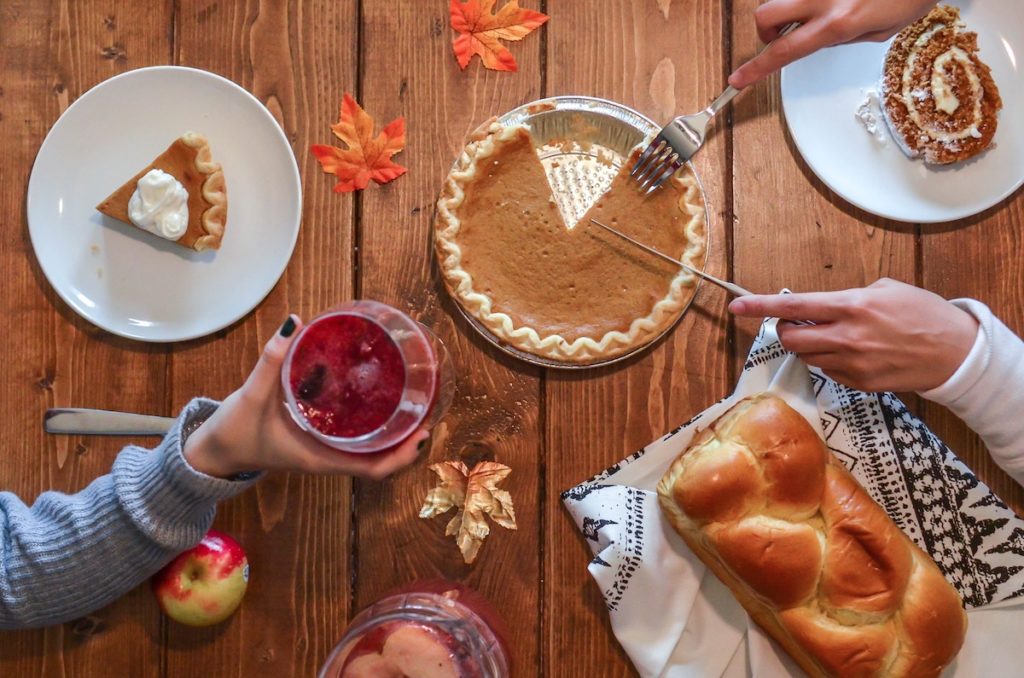Thanksgiving and Diabetes share the same month. Yes, yes, we know… for two very different reasons. But it is true that November is Diabetes Awareness Month. And, of course, as is customary, Thanksgiving will take place on the fourth Thursday of the month, which in 2019 is quite late, November 28th.
This post aims at relaying and discerning what kinds of meals or foods diabetics can and should enjoy during Thanksgiving: what is OK to eat, what is not, and if so, potential alternatives. For all our diabetic friends out there, please rest assured that although type 1 and 2 diabetes will pose somewhat of a challenge, it is true that Thanksgiving dinner offers a pretty balanced and varied diet. It has ample possibilities for healthy, diabetic-friendly food, as well as for dodging the no-no’s and welcoming full heartedly the ‘good stuff’.
The time of turkey-eating and family gatherings has a few anecdotes that should be highlighted:
First Thanksgiving: 1621
First Thanksgiving menu: No turkey.
First Thanksgiving holiday: 1863. Promoted by Sarah Josepha Hale (famous author of nursery rhyme “Mary Had a Little Lamb”) and sanctioned by President Lincoln.
National Bird: Benjamin Franklin wanted the turkey to be the national bird, not the bald eagle.
… and so many others.
Enemies and Healthy Alternatives of Diabetics in Thanksgiving
Well, diabetes and diabetics share some common foes:
- Simple carbohydrates
- Fatty foods
- Candy & Sugar
- Sugar based or sweetened sodas
- Ice cream
With this in mind, think of the stunningly gargantuan assortment of Thanksgiving dinner preparations. There’s a lot to process, so pay close attention. Here are the haves (with side notes) and the have nots.
| HAVES | HAVE NOTS |
| MEATS | |
| Roasted turkey (lean, healthy) | · No turkey skin (fat)
· Limit the amount of gravy to a bare minimum (fat) |
| DESSERT | |
| Fruit for dessert | Ice cream (fat, sugar) |
| Flourless pumpkin pie | Pie (fat, sugar) |
| VEGGIES & GREENS | |
| Green beans, but the “no frills” version | Green bean casserole with fried onions or ham on top (fat) |
| Yams (very small portion) | Candied yams (sugar, carbs) |
| Celery / Sautéed spinach | Sweet potato, especially if prepared in casserole (carbs, fat) |
| Carrots / Asparagus | Mashed potatoes are very starchy |
| Salad | Dressing on the side |
| SAUCES & STUFFING | |
| Cranberry relish made with a sugar substitute | Cranberry relish with sugar (sugar) |
| Stuffing (very small amount) | Any stuffing high on carbs, meaning practically all of them |
| DRINKS | |
| Water / Sparkling | Sugar-packed sodas |
| If you’re going to have alcohol, keep it to a bare minimum, like toasting | Alcohol, because it is full of carbs.
|
Our view, as stewards of health, does not preclude seeing reality eye to eye and promoting good mental/spiritual health, which has so many beneficial effects for the body and the mind. Therefore, we assume many diabetics will indulge, even if it’s just a little bit. If so, enjoy. But, just think that if you had a little more than was good or necessary during any course, just limit the other courses to these recommendations. Simply put, if you overdid it on the stuffing, be reasonable with the dessert.
As always, your best approach is to always get personalized advice from your doctor, physician, even from your registered dietician. Moreover, the American Diabetes Association features a plethora of diabetes-friendly recipes on www.diabetes.org. Check them out!!


